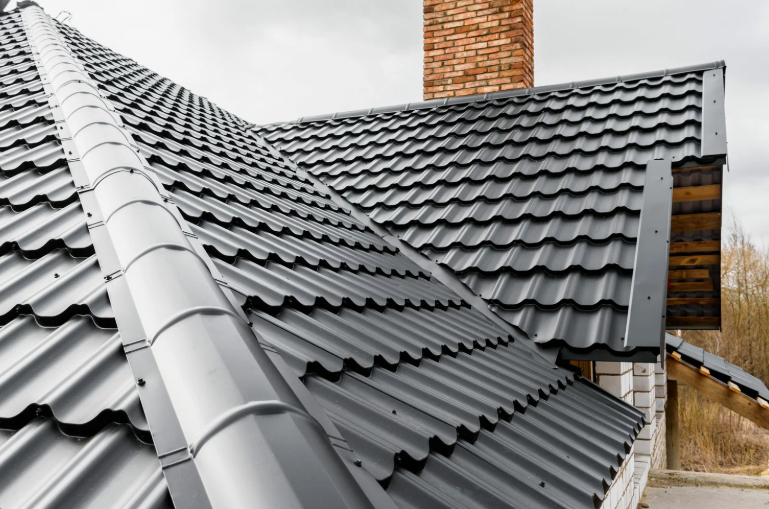When it comes to upgrading your home’s roof, a metal roofing system can be an excellent choice for homeowners looking for durability, energy efficiency, and aesthetic appeal. As one of the most long-lasting roofing materials on the market, metal roofing has become increasingly popular for both residential and commercial applications. If you are considering installing a metal roof, you’re probably curious about the entire process—what to expect, how long it takes, and how it will affect your home.
In this article, we’ll walk you through the typical steps involved in a metal roof installation, covering everything from preparation to finishing touches. Whether you’re installing a new roof or replacing an old one, understanding the process can help you make an informed decision. Our trusted roofing company, Nurnberg Roofing, is here to help you every step of the way. Let’s dive in and explore what you can expect during your metal roof installation!
Why Choose Metal Roofing?
Before we jump into the details of the installation process, let’s take a quick moment to talk about why metal roofing is a smart choice for homeowners.
Durability
Metal roofs are known for their extreme durability. They are highly resistant to extreme weather conditions such as high winds, heavy snow, hail, and even wildfires. A metal roof can last anywhere between 40-70 years, depending on the type of metal used, while traditional asphalt shingles typically last around 20-30 years.
Energy Efficiency
Metal roofing reflects a significant amount of heat from the sun, which can help reduce your cooling costs in the summer. By improving your home’s energy efficiency, you can save money on energy bills year-round.
Aesthetic Appeal
Available in various styles, colors, and finishes, metal roofing can suit a wide variety of architectural styles. Whether your home has a traditional, modern, or industrial aesthetic, there is a metal roofing option that will enhance its beauty.
Low Maintenance
Once installed, a metal roof is relatively low-maintenance compared to other roofing materials. Routine inspections and occasional cleaning are often enough to keep the roof in top condition.
With these benefits in mind, it’s clear why so many homeowners are choosing metal roofing for their properties.
The Metal Roof Installation Process
Now, let’s explore what happens step-by-step during a metal roof installation. Whether you’re working with a skilled contractor or tackling a DIY project (which we don’t always recommend for something as vital as a roof), understanding the process will give you peace of mind. Here is an overview of the steps involved:
1. Preparation: Inspection & Planning
The first step is preparation—both for you and your roofing contractor. Before any physical work begins, a thorough inspection of your current roof will be conducted to determine if any issues need addressing.
Your roofing team, such as the experts at Nurnberg Roofing, will evaluate the structure to ensure it’s strong enough to support the new metal roofing system. If your old roof has severe damage or structural issues, those will need to be resolved beforehand.
You’ll also discuss the specific metal roofing materials you’d like to use. Metal roofing comes in many forms, including standing seam, corrugated, and metal shingles, and it’s important to choose a style that fits both your budget and aesthetic preferences.
2. Removal of Old Roof (if applicable)
If you’re replacing an old roof, the next step involves the removal of the existing roofing materials. Depending on the type of roof currently in place, this may take some time. For instance, if you have asphalt shingles, they will need to be removed and hauled away. For some properties, the old roof may be left in place and covered with the new metal roofing, but typically, it’s best practice to remove it to ensure a proper installation.
After the old roofing material is removed, your contractor will inspect the decking beneath to check for any damage that may need to be repaired before the new roof is put in place.
3. Installation of Underlayment
Once the roof deck is prepped and cleared, a protective underlayment is installed. This is a critical part of the installation process. The underlayment is typically a weather-resistant barrier (such as synthetic underlayment) that provides an extra layer of protection for your home against leaks.
For added protection, this layer helps prevent moisture build-up underneath the metal panels. If you live in an area that experiences frequent rain or snow, this extra step ensures your metal roof works effectively as a long-term water barrier.
4. Metal Roofing Panel Installation
The main step of your installation involves laying down the metal roofing panels. This is a very skill-intensive process, requiring precision and care. The panels are first aligned, cut, and shaped to fit the dimensions of your roof. One of the advantages of working with professionals like Nurnberg Roofing is their expertise in ensuring that the panels are installed correctly to prevent leaks or other issues.
These panels are generally attached with special fasteners and screws designed to secure the roof while still allowing for the necessary expansion and contraction due to temperature changes. The roofing system should be designed with enough gaps to avoid warping or buckling over time.
5. Securing the Ridge Cap
The ridge cap is the finishing touch that covers the top peak of your roof. It helps ensure that your roofing system is sealed to prevent water and debris from entering the gap where two roof panels meet. These are installed last after the rest of the metal panels are laid down.
6. Flashing and Sealing
Flashing is installed around roof protrusions, such as chimneys, vents, and skylights. It serves to direct water flow away from these areas to prevent leaks. A crucial part of any roofing system, flashing is essential for ensuring the longevity and effectiveness of your roof.
After this, high-quality sealant is applied around any seams or edges to prevent moisture from seeping in and causing damage over time.
7. Inspection and Clean-Up
Before wrapping up the installation, your roofing contractor will conduct a final inspection. This step ensures that the roof is properly secured and that every seam, panel, and fastener is in place. Additionally, any debris from the installation process is cleaned up, leaving you with a beautiful, functional new roof.
8. Post-Installation Support
Once the installation is complete, many professional roofers, like Nurnberg Roofing, offer post-installation services such as warranty details, maintenance tips, and guidance on what to expect going forward. Regular maintenance can help extend the life of your metal roof, keeping it looking great and working efficiently for decades.
How Long Does a Metal Roof Installation Take?
The timeline for a metal roof installation varies based on several factors, including the size and complexity of your roof, weather conditions, and the type of metal roofing being installed. Typically, the entire process takes about 1 to 3 days. If you’re installing a roof on a smaller home, you might expect a quicker timeline, while larger or more intricate roofs could require additional time.
One of the advantages of metal roofing is that the installation process tends to be quicker compared to other roofing materials, especially if there is no need for extensive repairs beforehand.
What Are the Costs of Metal Roof Installation?
The cost of installing a metal roof can vary depending on multiple factors, such as the type of metal chosen, roof pitch, home size, and labor. On average, metal roof installations can range anywhere from $5,000 to $15,000, but this can go higher depending on the design, complexity, and materials.
However, it’s essential to view this as an investment. While the upfront cost is typically higher than that of asphalt shingles, the durability and energy savings you get from metal roofing make it a worthwhile investment over time.
FAQs
1. How long does a metal roof last?
A metal roof can last between 40 to 70 years, depending on the material, installation quality, and how well the roof is maintained.
2. Will a metal roof make my house more energy-efficient?
Yes! Metal roofing reflects heat from the sun, reducing your cooling costs in the summer and contributing to energy savings.
3. Can metal roofing be installed over existing shingles?
Yes, in many cases, metal roofing can be installed over existing shingles. However, this depends on local building codes and whether there is enough structural support to handle the extra weight.
Conclusion
Installing a metal roof is a great way to improve your home’s durability, energy efficiency, and curb appeal. The process itself, when done by experienced professionals like Nurnberg Roofing, is streamlined and efficient, ensuring your new roof will provide reliable protection for many years. Whether you’re concerned about cost, longevity, or installation time, understanding what to expect can make the entire process much smoother. Let Nurnberg Roofing help guide you through every stage to achieve the durable, efficient roof you’ve always wanted!



